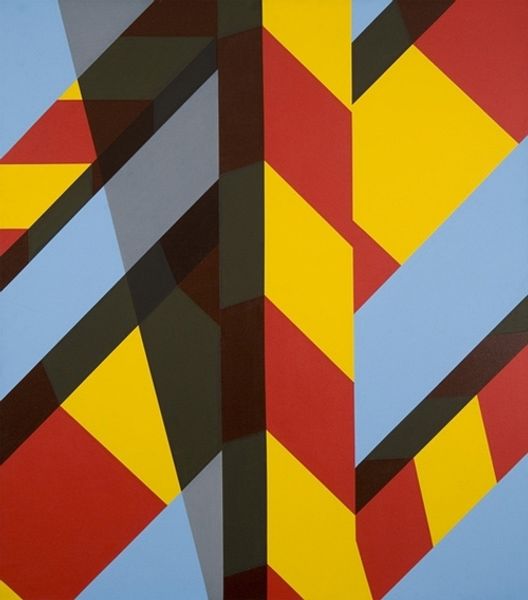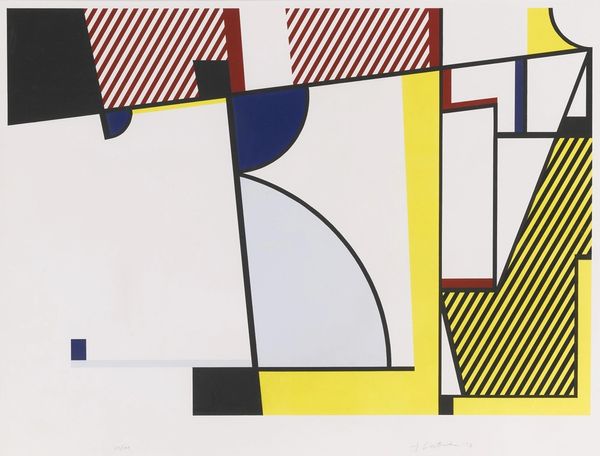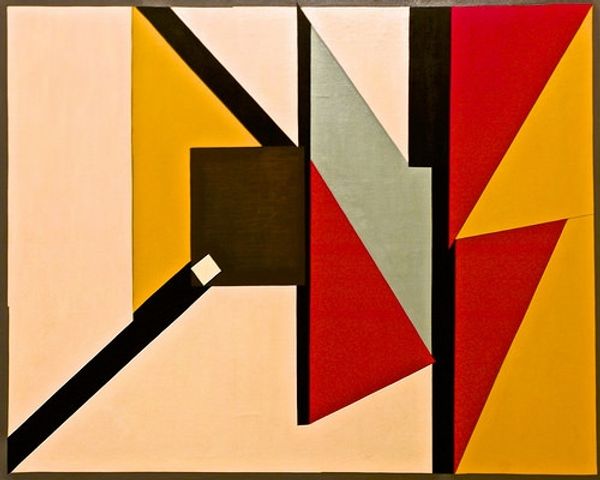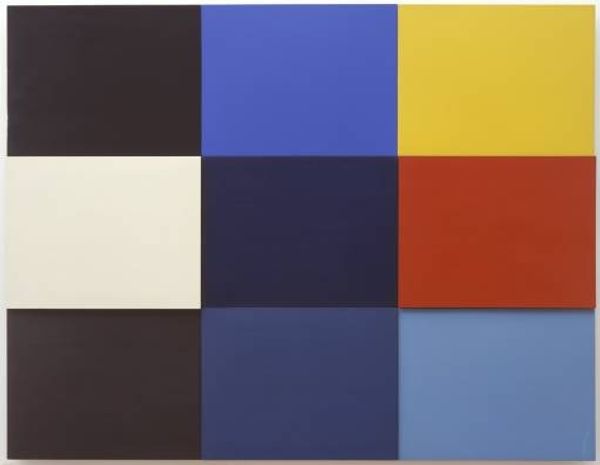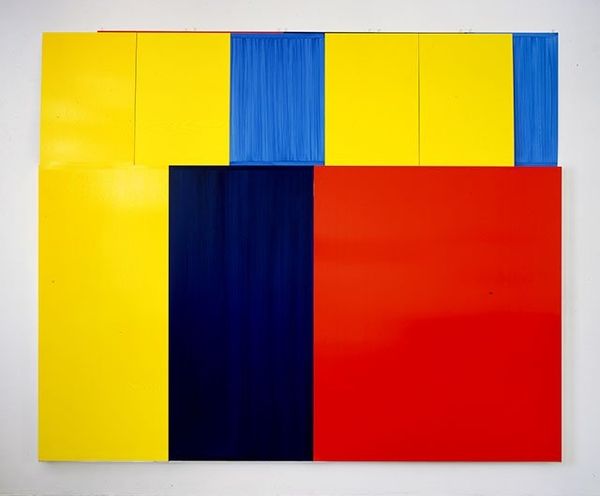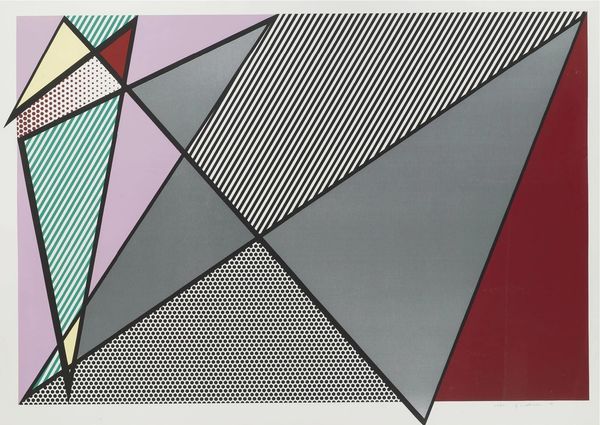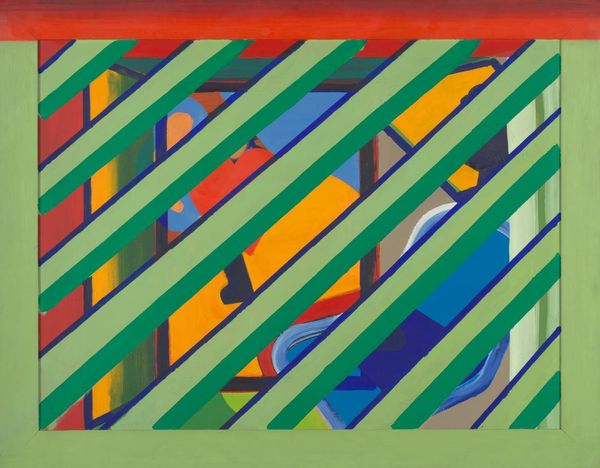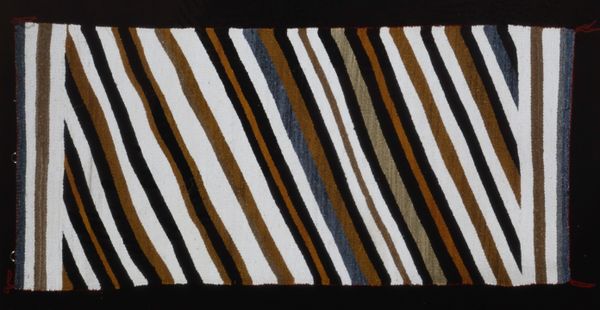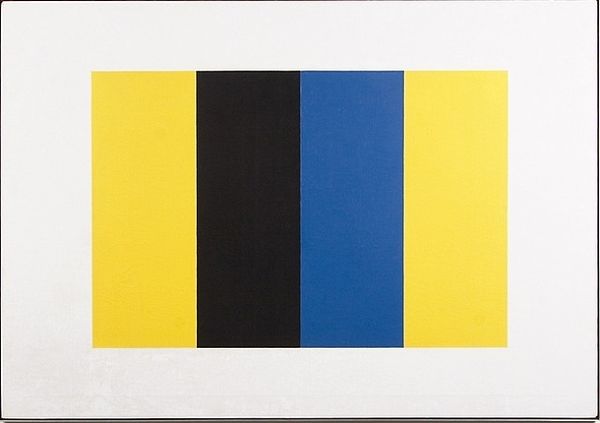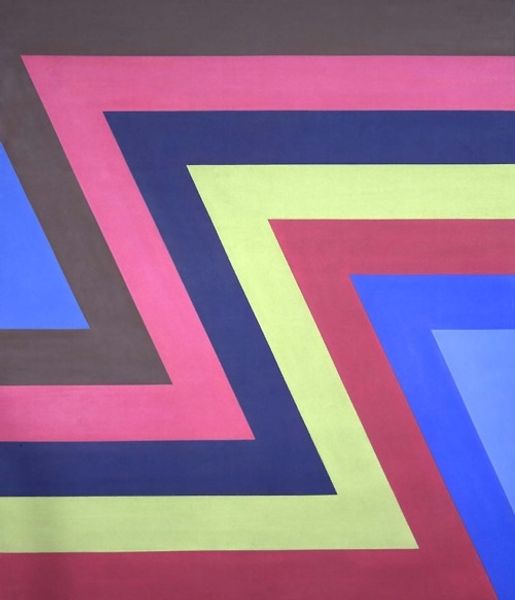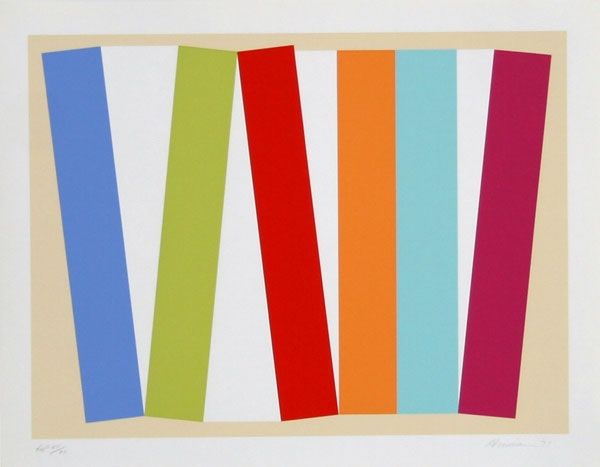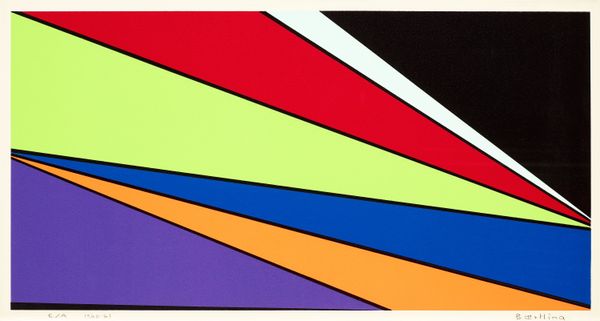
mixed-media
#
abstract-expressionism
#
abstract expressionism
#
mixed-media
#
non-objective-art
#
pattern
#
op art
#
pop art
#
form
#
geometric pattern
#
abstract pattern
#
geometric-abstraction
#
vertical pattern
#
abstraction
#
pattern repetition
Copyright: Sandu Darie,Fair Use
Curator: Welcome. Here we have an "Untitled" mixed-media work from 1957, by Sandu Darie. Editor: Well, my first thought is…dizzying. The repeating vertical lines create this overwhelming sense of pattern, almost vibrating before your eyes. And the bright primary colours really amplify that effect. Curator: Absolutely. Darie was deeply involved with geometric abstraction, a style that truly boomed in the mid-20th century. You can really see the dialogue happening here between formalism and pure aesthetics, even potentially, something we could label as ‘op art’. Editor: What’s particularly compelling to me is the use of mixed media, although without the artwork being properly catalogued in regard of technique is hard to make assumptions. What impact do you think the material choice has on the work's reception? How does this intersect with art world hierarchies? Curator: An intriguing perspective! I believe the use of ‘poor’ or mundane materials brings in certain democratisation, rejecting the notion of ‘preciousness’ linked to art and maybe bringing focus to accessible materials, like the raw materials used by industry for example, which is also common ground to be read through pop art. This creates tension. It subtly undermines expectations of art and questions who gets to define its value and within what context. Editor: True, true, but at the same time, an art piece presented in a gallery still adheres to that hierarchical system, no? By putting this piece inside a gallery, is Darie still supporting the idea of Art being a status symbol, even if, through use of common material, he aims at making art available for the masses? Curator: You bring up a crucial point. There is certainly that tension between challenging established structures and simultaneously participating in them by exhibiting the artwork. But it also opened the discourse about accessibility and social influence of art, what is, at the end, a dialogue Darie’s creation opened doors to, inviting artists to question art's function in shaping societal norms and practices. Editor: Ultimately, I think, it’s this conversation –the way art affects and is affected by everything else– is why Darie's “Untitled” remains so relevant today. Curator: Agreed. It offers not only an aesthetic experience, but also invites reflection about cultural production and its underlying currents of power.
Comments
No comments
Be the first to comment and join the conversation on the ultimate creative platform.
